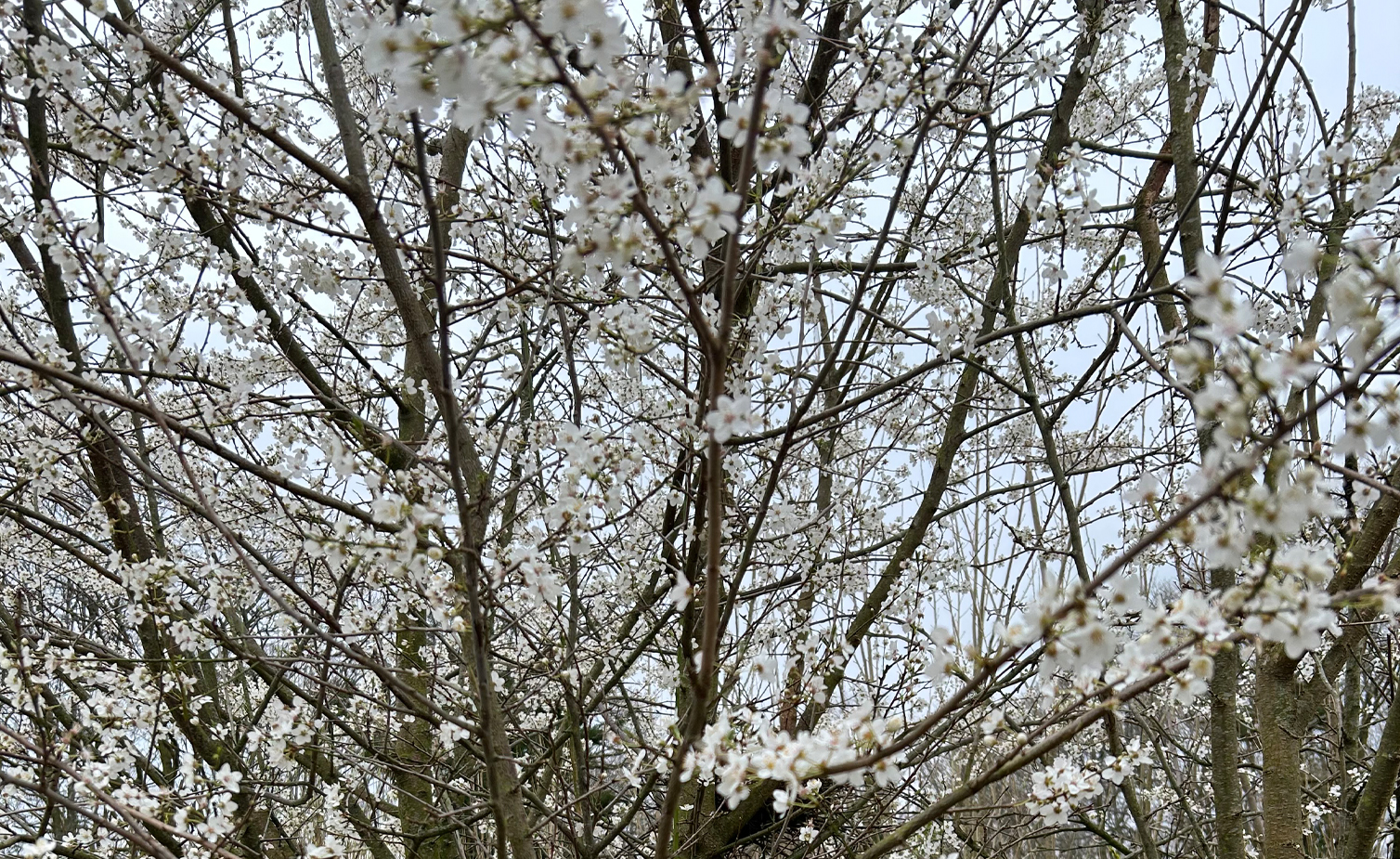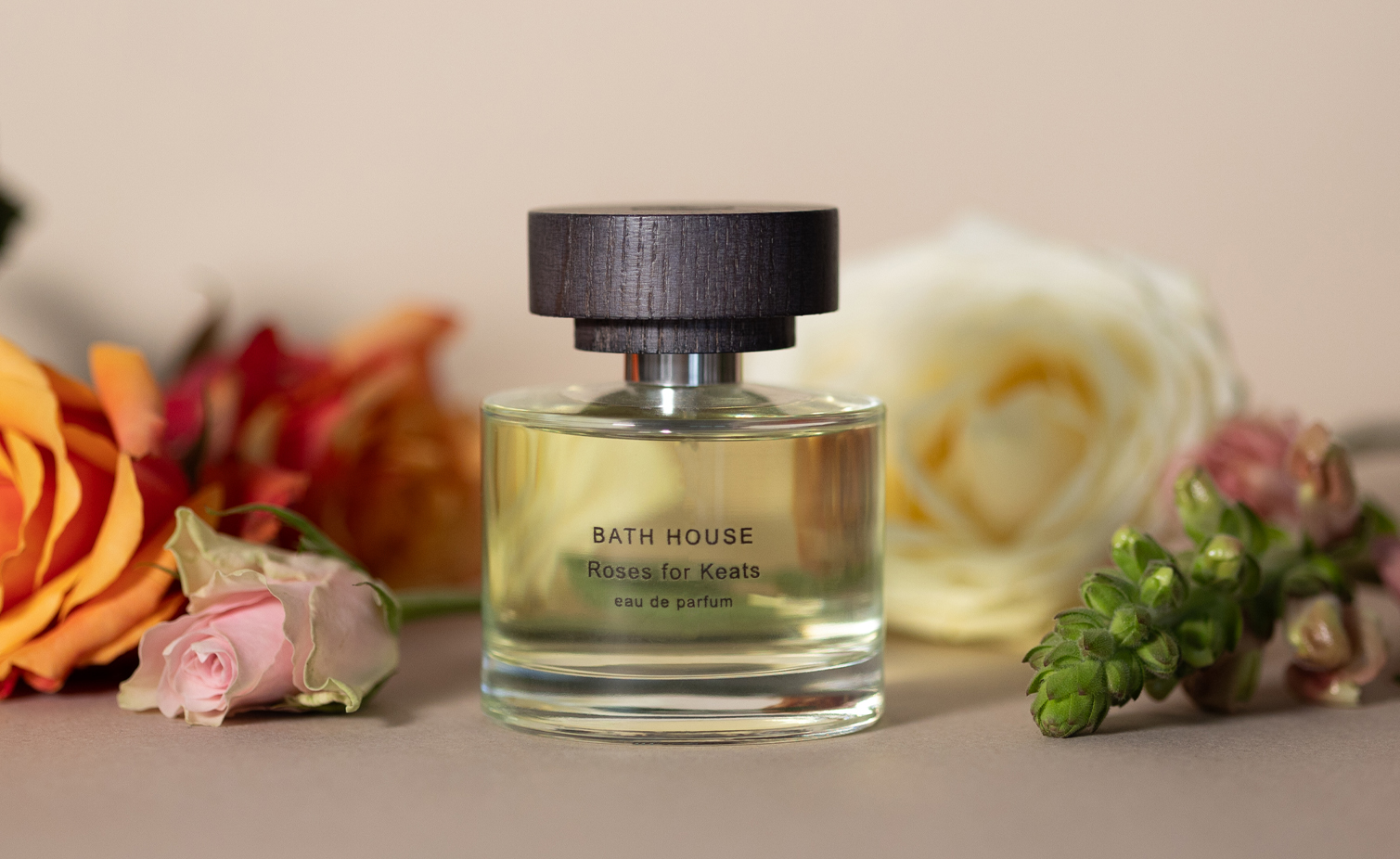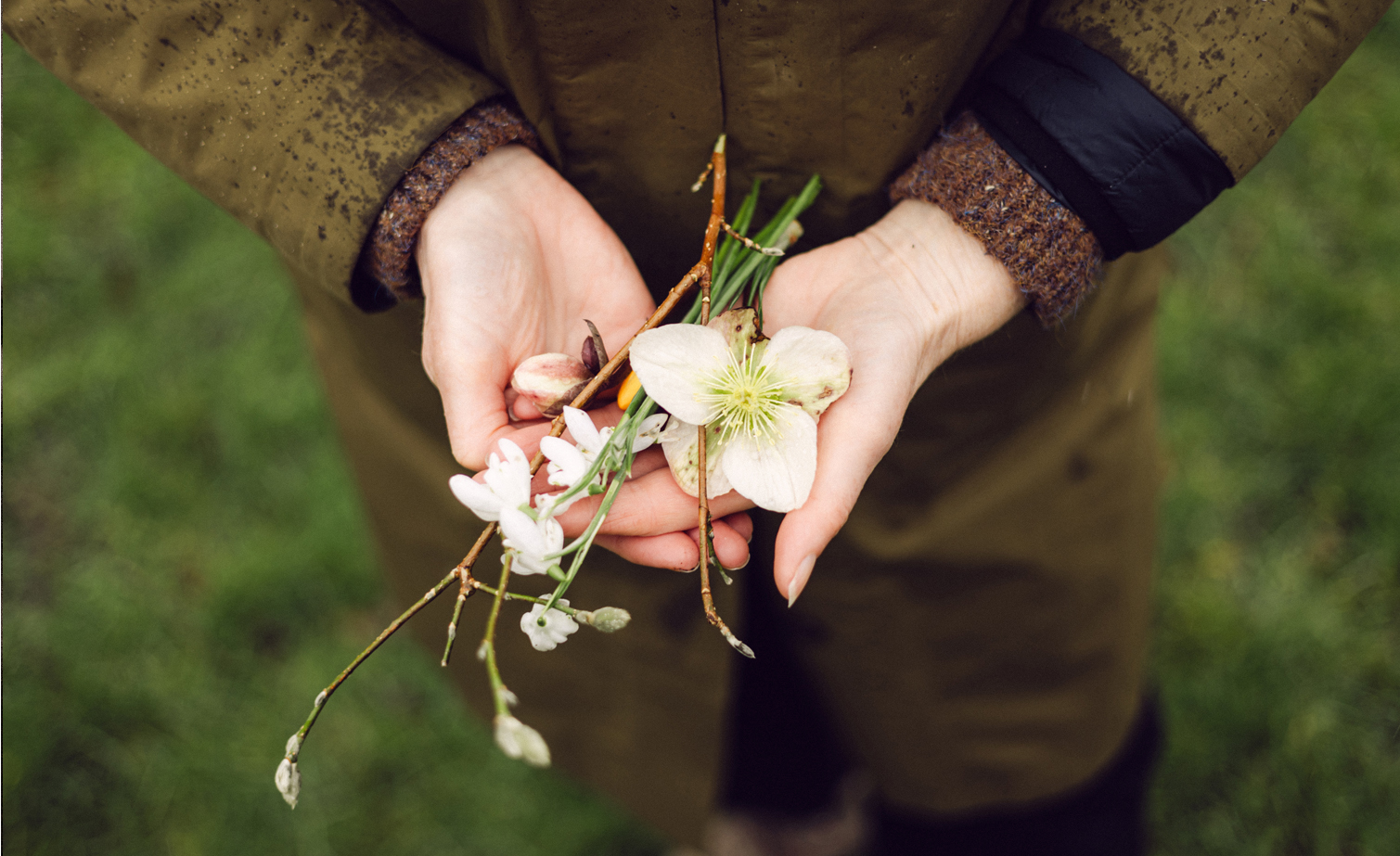In late December, I draw back the curtains to find an unexpected soft blanket of snow covering Ambleside. It’s 7am and the village is still silently sleeping, unaware of the beauty that has occurred overnight.
The pavements are untouched, twinkling under the street lights. The sky a deep blue as dawn begins to break on the horizon.
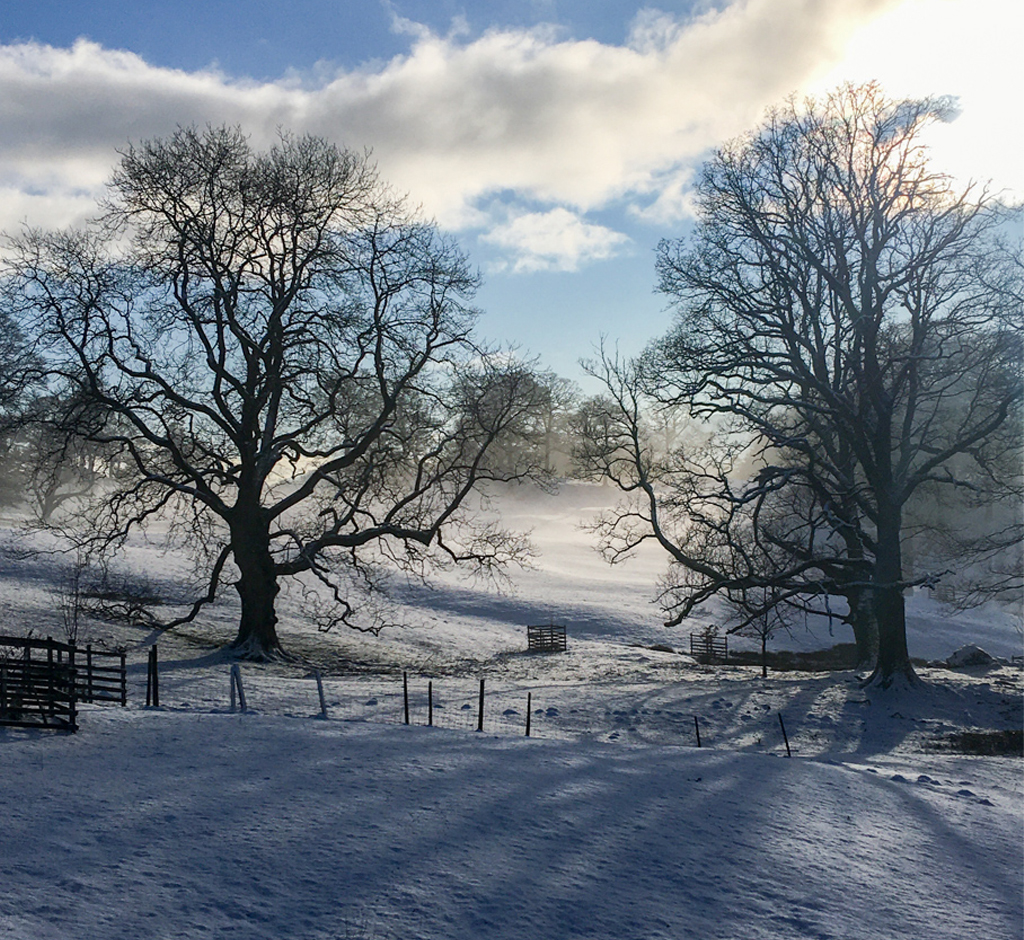
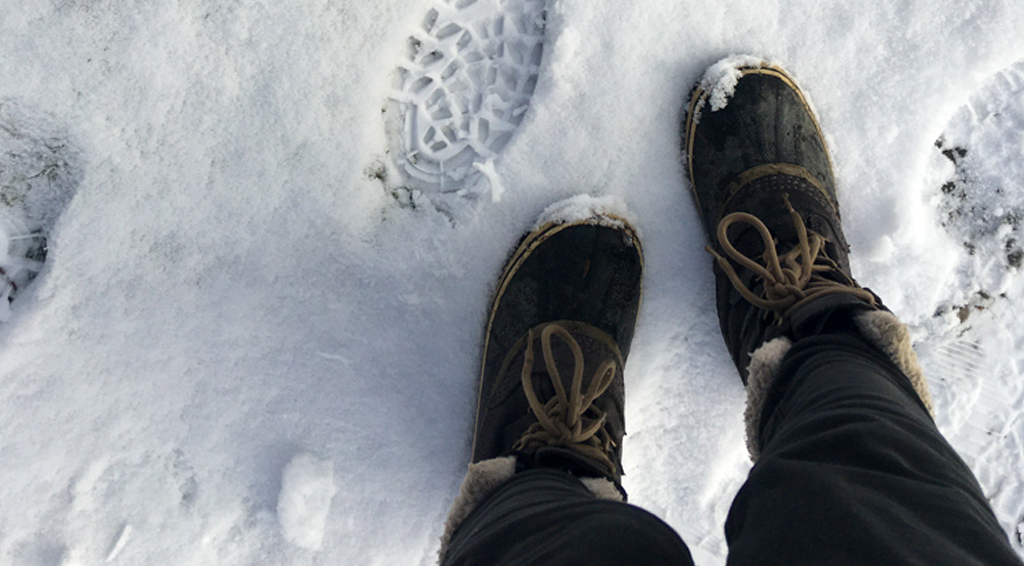
I love the fleeting nature of winter adventures, so different from the long, lazy days of summer where I roam the fells until early evening. Daylight is restricted to 7 or 8 hours, walks are precise in nature.
Bundled in layers, I set out for the arched footpath that runs between Ambleside and Rydal. A mist has settled softly over the land. Trees bare and stripped back to their architectural core stand ghost-like on the hills behind. A landscape that is usually so familiar to me is suddenly unfamiliar in nature.
Over a stile and into the grounds of Rydal Hall with the towering larch and pine trees hanging heavy with the weight of snow. I pause at the bridge to admire the tiny grotto and waterfall, Narnia like in the overnight transformation.
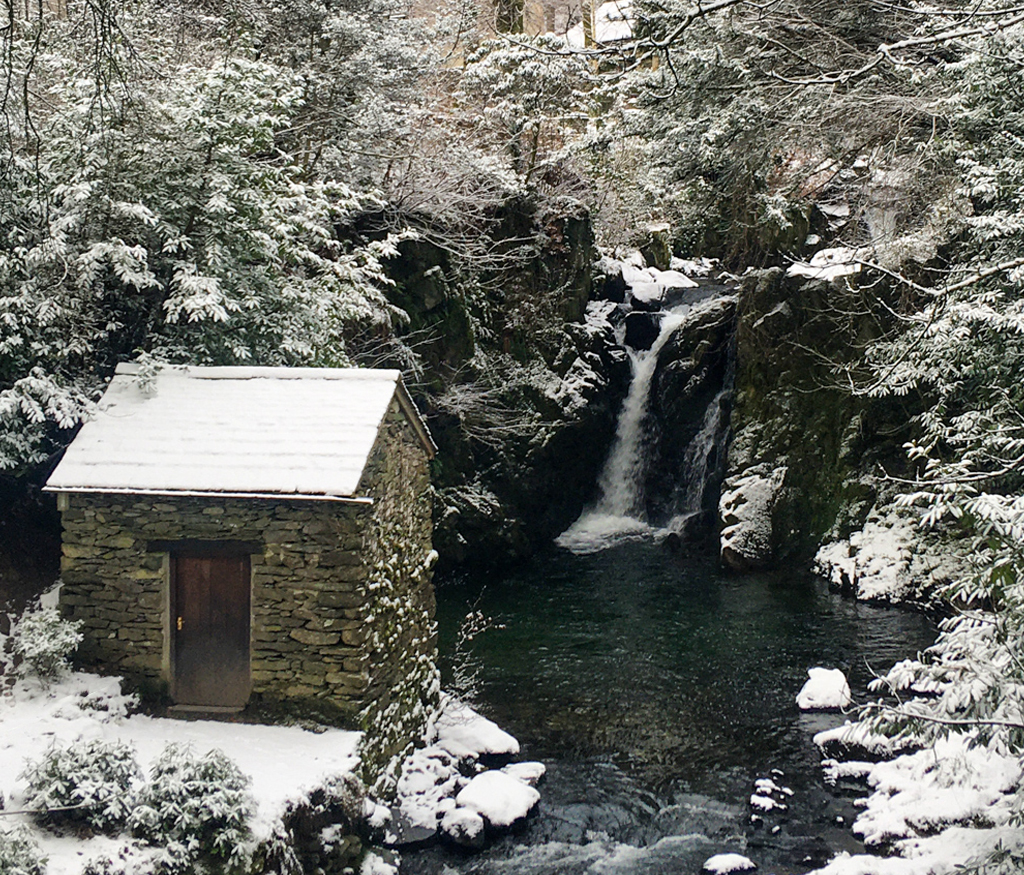
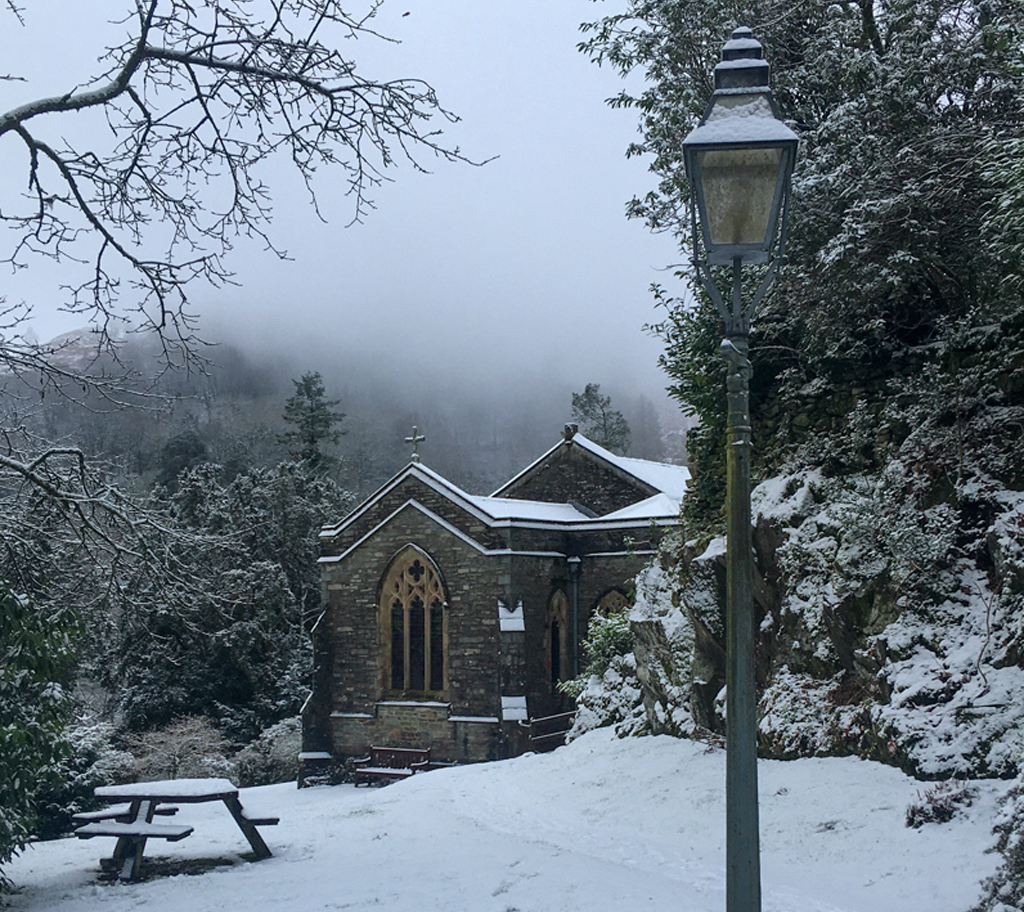
On reaching Rydal Water, I pause on a small mound at the head of the lake, next to a gnarled and twisted oak tree, stooped over like an old man guarding the lake. I pour a mug of steaming hot chocolate from my flask and think about how devoid of colour, a snowy landscape allows you to focus on the form and structure of nature.
I follow the undulating shoreline alongside Rydal Water, my boots crunching in the snow, the puddles of rain now turned to ice. These potential hazards naturally force me to slow my pace down, to be watchful.
On the horizon, the outline of Loughrigg fell looms as I turn right towards White Moss Woods where the trees are slumbering through winter, storing and nurturing energy until they are ready to burst to life again in spring.
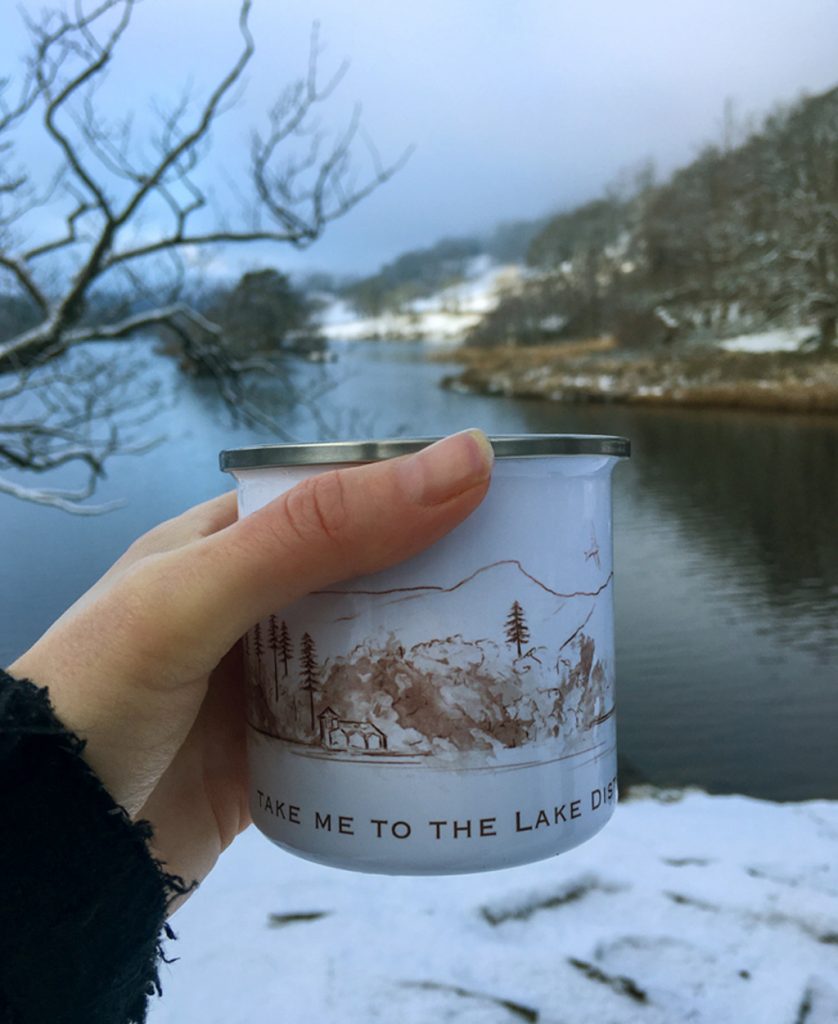
I hit the main road, where the snow has lost its beauty – slushy and brown from car tyres and follow a steep path heading up the hillside on the opposite side of Rydal. A stream trickles next to me, musical and comforting in the mist.
On reaching the top, the path meets an old corpse road known as the Coffin Route, where bodies used to be carried from Ambleside to the only consecrated ground of St Oswalds Church in Grasmere. As I turn back towards Rydal, I think of all the souls that have trodden this path from years gone by, the local characters from musicians to poets, cobblers to butchers. A life much simpler than the days we live now.
Gradually, the landscape begins to be is transformed from eerie to joyful, the sunlight burning off the morning mist, the snow now glittering and dancing like tiny jewels on the landscape.
Homeward bound now, my face is raw and rosy from the cold. I love that feeling of returning from a winter walk, a small sense of achievement for braving the elements and then being rewarded with a hot bath and a cosy evening cuddled by the fire.
Resorted, revived and renewed.
Rebecca is a writer and hillwalker based in Ambleside, find her on Instagram at @lookwithneweyes and at www.lookwithneweyes.com.


